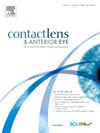睑板腺上皮病变:当前识别策略和未来展望的专题回顾。
IF 4.1
3区 医学
Q1 OPHTHALMOLOGY
引用次数: 0
摘要
眼睑拭泪上皮病变(LWE)是一种公认的影响视觉质量和眼部舒适度的眼部疾病,其特点是上眼睑边缘结膜受损。这篇综述批判性地研究了目前识别 LWE 的策略,并探讨了 LWE 的多因素病因及其与各种眼表疾病的关联。在 PubMed 上进行的文献综述确定了 67 项相关研究,通过对这些研究的分析,加深了对 LWE 诊断标准及其临床意义的理解,为提高诊断准确性和患者预后提供了未来展望。研究还探讨了 LWE 与隐形眼镜相关不适之间的关联,研究报告中关于软性隐形眼镜配戴者的患病率和严重程度的结论相互矛盾。此外,LWE 还与非隐形眼镜佩戴者的泪膜异常、泪液成分改变和眼睑边缘异常有关,从而使诊断和管理更加复杂。本文对目前的 LWE 分级系统(包括主观方法和半客观方法)进行了综述,并强调了主观性、复杂性和可变性等挑战。LWE 分级方面的最新进展,包括半自动化方法和摄影量表,显示了其前景,但在临床环境中的实施面临挑战。综述最后提出了进一步研究的领域,包括调查导致 LWE 发病和发展的因素、开发更灵敏的诊断工具以及探索 LWE 对眼表健康和视觉功能的影响。文章强调了分级系统的标准化、验证和创新,以提高诊断准确性,改善 LWE 患者的临床疗效。持续的 LWE 分级研究对于解决诊断难题和优化临床实践中的评估方法至关重要。本文章由计算机程序翻译,如有差异,请以英文原文为准。
Lid wiper epitheliopathy: Topical review of current identification strategies and future perspectives
Lid Wiper Epitheliopathy (LWE) is a recognized ocular condition affecting visual quality and ocular comfort, characterized by the damage of the marginal conjunctiva of the upper eyelid. This review critically examines the current strategies for LWE identification and explores the multifactorial etiology of LWE and its association with various ocular surface diseases. A literature review conducted on PubMed identified 67 relevant studies, which were analyzed to enhance understanding of LWE’s diagnostic criteria and its clinical implications, offering future perspectives on improving diagnostic accuracy and patient outcomes.
The association between LWE and contact lens-related discomfort is examined, with studies reporting conflicting findings regarding its prevalence and severity among soft contact lens wearers. Moreover, LWE has been linked to tear film abnormalities, altered tear composition, and eyelid margin abnormalities in non-contact lens wearers, further complicating diagnosis and management.
Current LWE grading systems, including subjective methods and semi-objective approaches, are reviewed, highlighting challenges such as subjectivity, complexity, and variability. Recent advances in LWE grading, including semi-automated methods and photographic scales, show promise but face implementation challenges in clinical settings.
The review concludes by proposing areas for further research, including investigating factors contributing to LWE onset and development, developing more sensitive diagnostic tools, and exploring the impact of LWE on ocular surface health and visual function. Standardization, validation, and innovation in grading systems are emphasized to enhance diagnostic accuracy and improve clinical outcomes for patients with LWE. Ongoing research in LWE grading is essential for addressing diagnostic challenges and optimizing assessment methodologies in clinical practice.
求助全文
通过发布文献求助,成功后即可免费获取论文全文。
去求助
来源期刊

Contact Lens & Anterior Eye
OPHTHALMOLOGY-
CiteScore
7.60
自引率
18.80%
发文量
198
审稿时长
55 days
期刊介绍:
Contact Lens & Anterior Eye is a research-based journal covering all aspects of contact lens theory and practice, including original articles on invention and innovations, as well as the regular features of: Case Reports; Literary Reviews; Editorials; Instrumentation and Techniques and Dates of Professional Meetings.
 求助内容:
求助内容: 应助结果提醒方式:
应助结果提醒方式:


